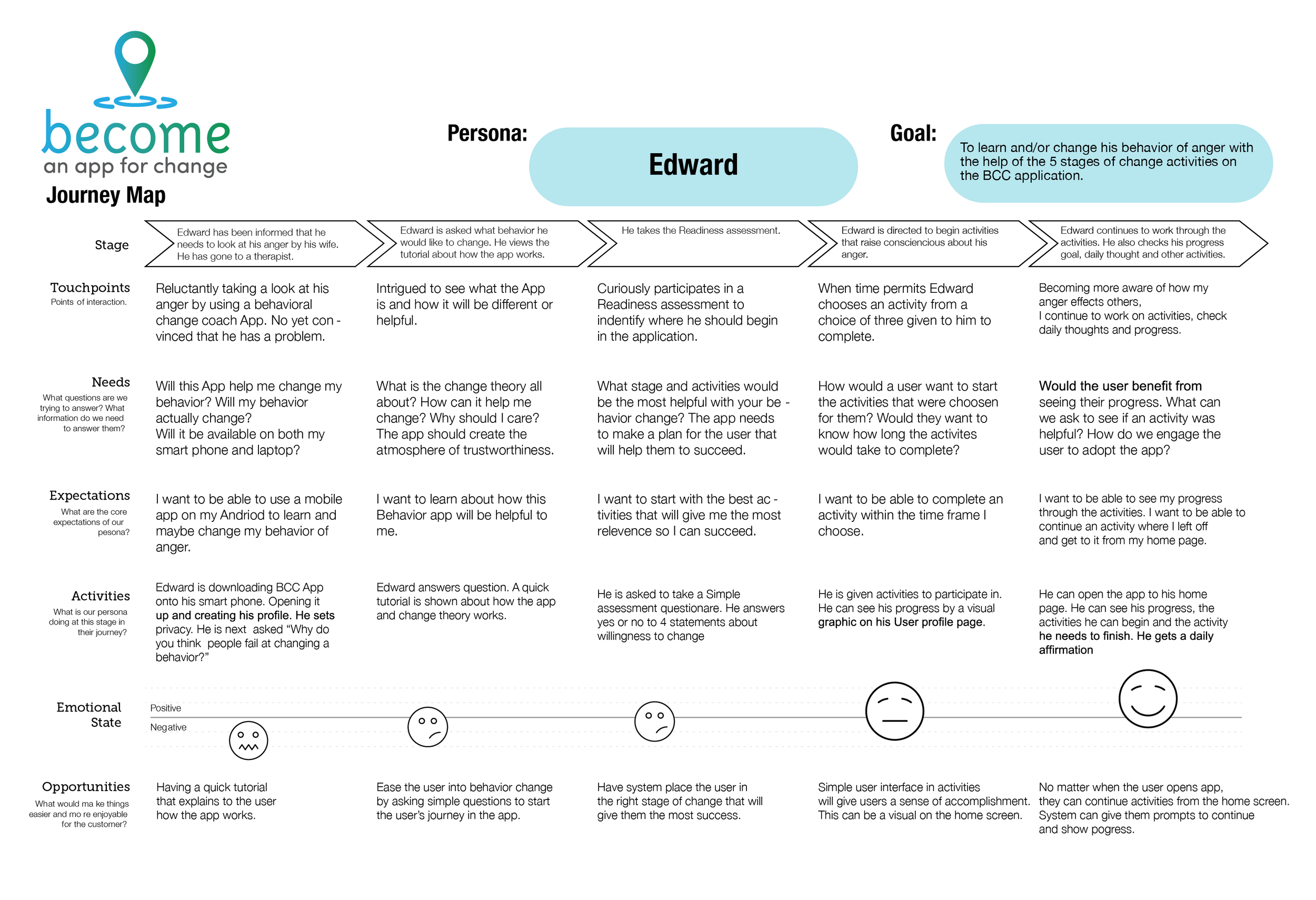Be the change you want to see in the world.
The mission for any healthcare services for the military health system (MHS) is to provide the best care to the active duty service members so they may be mission ready. The primary users in this sphere are military service members that do not want anyone to know they may have a problem. Their privacy and security are crucial.
This project supports overburdened military health care providers (MHPs) who often do not have the time needed to enhance readiness in non-compliant patients. By developing technologies that motivate behavioral changes, Become reduces treatment dropout rates that occur due to a mismatch between treatment type and motivation stage, and improve a service member’s return to duty or readiness.
The app is designed to help users work on their behavior change in the “white space” between therapy sessions.
-
We spoke to 10 users (ages 19 to 30) about behavior change and how they felt about using a mobile app to make a change in their lives. The younger users were not as forthcoming about having any faults. Most of the users liked the idea of having a mobile app.
This particular app is based off the transtheoretical model of change and the concept was written by 8 psychologists and one lead who acted as our SME and Product Manager.
There is really no competition on the market for this kind of app so we researched apps that focus on mindfulness, and forming habits such as language apps.
-
Our personas came from a previous app that we created so we understood the user very well.
The user will be participating in activities that will push them to think about a behavior change, how it effects themselves and others, and challenge them to make a positive choice to change their behavior. Our findings show that the become app’s tone of voice needs to create an atmosphere of friendliness, be supportive, helpful, simple, focused, hopeful and most importantly it must be a trustworthy voice.
The hardest part was making 86+ activities, and 5 stages of change an easy and approachable task.
-
With the design we wanted to create consistent patterns to aid in the understanding and expectations of each section of the app. We decided to use cards as the base design pattern and hone in on pinning down 8 design patterns for every exercise. This way the developer could focus on creating the base for each pattern making implementation a breeze. We got rid of the concept of stages of change because we didn’t want the user to believe there was an end goal. We wanted them to focus on incremental growth for lasting change.
For the branding we wanted to have the focus on the user and the journey of activities. We focused on building trust through the language and colors. the microinteractions were present to evoke delight.
-
In using the patterns in place for each activity the wireframes became a breeze to build out. It ended up being over 1000 individual cards for the program and almost 90 different activities. In testing we surfaced that younger users did not like the colors or characters in the app but these items were loved by the audience just a couple of years older (our target audience).
We produced a video of the concept to help with funding and users responded really well to it. We were successful in creating a trustworthy app and the science behind it has been proven helpful since the early 1970’s.
Our persona
The Journey Map
Branding session
Full user flow including all activities
A sample user flow of what a user might experience
Initial exercise of what a user might experience when picking the change they would like to work on.
Final results
We got a lot of good feedback in user testing. Users seemed comfortable with user flow and got substance from completing the activities. User interactions with the part of the app that was developed were seamless. No one got stuck trying to finish a task. We could see that activities did make them think about change differently.
This was an incredible project that had potential to help many people including over-worked psychologists and their patients. It is interesting to see how the elements to this app have been discussed at length in podcasts like Freakanomics and can be seen in popular apps like Noom. The psychology and behavioral therapy behind it has made lasting results for many people and it was truly ahead of it’s time. With the product owner focused on building out the entire program instead of just an MVP, was it’s demise as it lost funding before being completely developed.






